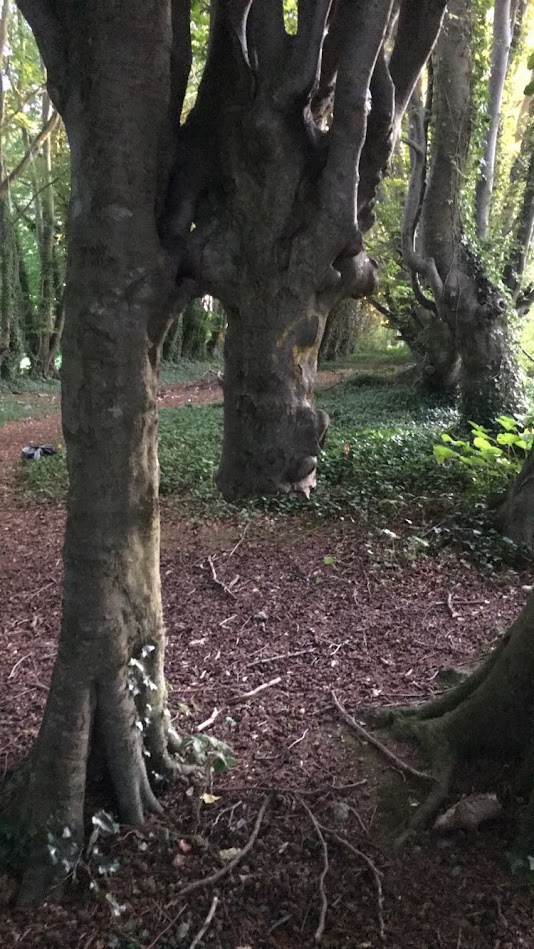Friday, May 28, 2021
Tuesday, May 25, 2021
Judit Polgár
She has won or shared first in the chess tournaments of Hastings 1993, Madrid 1994, León 1996, U.S. Open1998, Hoogeveen 1999, Sigeman & Co 2000, Japfa 2000, and the Najdorf Memorial 2000.
Polgár is the only woman to have won a game against a reigning world number one player, and has defeated eleven current or former world champions in either rapid or classical chess: Magnus Carlsen, Anatoly Karpov, Garry Kasparov, Vladimir Kramnik, Boris Spassky, Vasily Smyslov, Veselin Topalov, Viswanathan Anand, Ruslan Ponomariov, Alexander Khalifman, and Rustam Kasimdzhanov.
On 13 August 2014, she announced her retirement from competitive chess. In June 2015, Polgár was elected as the new captain and head coach of the Hungarian national men's team. On 20 August 2015, she received Hungary's highest decoration, the Grand Cross of the Order of Saint Stephen of Hungary.
#FB00715
How can a school’s actions turn a six-year-old boy into a potential perpetrator with a law enforcement record? This is how.

It could happen to you.
Read about the incident in its entirety here.
https://architectureofinjustice.com
#FB00714
Monday, May 24, 2021
Bathroom door
Apparently, the door’s design purposefully limits how much privacy you have in your most private moments. It aims to stop users from intentionally making messes in public bathrooms. How does this work, you ask? By forcing other patrons to call you out if you leave gross stains on the toilet bowl, wall, and floors.
#FB00713
Sunday, May 23, 2021
The Dead Rise to Advertise
Computers have given producers incredible abilities to manipulate images and create breathtaking effects for film and television audiences. However, this power has a very controversial dark side.
Famous but long-dead celebrities have been digitally resurrected to lend their endorsements to numerous commercial products. Photographs or scenes from their filmed appearances are digitally processed to show them interacting with various products or people hawking those products. These appearances aren't limited to film and TV stars. Historical figures have given their digital support to numerous products and services as well.
The use of dead celebrities' images has diminished over the past decade, especially in North America. This is in part due to the public's growing distaste for the trend, but another influence has been the implementation of inconsistent personality rights laws across the continent that leave advertisers unsure as to whether they need to obtain expensive permission from a dead celebrity's estate to use the deceased's image. Twelve states (and Quebec in Canada) have laws on the books that prohibit the unauthorized use of such images, but the length of time these rights exist after death varies from jurisdiction to jurisdiction, and in most states the use of an image in a "work of art" is excluded - but in most cases nobody has defined whether advertisements are works of art. It's easier just to hire a double.
https://tvtropes.org/pmwiki/pmwiki.php/Main/TheDeadRiseToAdvertise
#FB00712
Fake Shemp
A fake Shemp is someone who appears in a film as a replacement for another actor or person. Their appearance is disguised using methods such as heavy make-up (or a computer-generated equivalent), filming from the back, dubbing in audio and splicing in past footage from the original actor's previous work, using a sound-alike voice actor, or using partial shots of the actor. Coined by film director Sam Raimi, the term is named after Shemp Howard of the Three Stooges, whose sudden death in 1955 necessitated the use of these techniques to finish the films to which he was already committed. Once somewhat commonplace throughout the 20th century, the use of fake Shemps to emulate living people is now forbidden under Screen Actors Guild contracts, largely because of a lawsuit filed by Crispin Glover — following his replacement in Back to the Future Part II — that determined that the method violates the original actor's personality rights. The method continues to be used in cases, such as Shemp's, where the original actor is deceased and permission from the deceased actor's estate is granted.
A fake Shemp is distinguished from a stunt double. Stunt doubles usually only substitute for an actor in select scenes where the original actor is either unable to perform the stunt or is unwilling to take the risk of being injured in the stunt. The same techniques are often used for both.
The word became an expanded term-- "What are you doing on Saturday night?" "Nothing, I'm just shemping." "Let's go shemp around somewhere," "What's the guy like, is he an idiot?" "Nah, he's just a shemp,' meaning he's no big deal. "Did you have a good time?" "It was sort of a shemp time, we didn't really do anything." So the term became synonymous with things that aren't substantial, or are fake, or whatever. We've been trying to spread it on different film shoots out here, and it works well, cause you can go, "Ah, shemp that thing over about a foot," or whatever.
#FB00711
Hugh Brannum (Mr. Green Jeans)
Hugh Brannum (January 5, 1910 – April 19, 1987) was an American vocalist, arranger, composer, and actor best known for his role as Mr. Green Jeans on the children's television show Captain Kangaroo. During his days with Fred Waring and his Pennsylvanians, he used his childhood nickname "Lumpy".
Mr. Green Jeans earned his moniker from his distinctive apparel, a pair of farmer's overalls (later, jeans and a denim jacket) in his signature green (although, since the show was broadcast in black-and-white for much of its run, this was lost on viewers). He was a talented and inquisitive handyman who provided assistance at the Treasure House. He frequently visited the Captain with the latest addition to his menagerie of zoo animals.
Aside from Mr. Green Jeans, Brannum played a number of characters on Captain Kangaroo from 1955 to 1984, including the Professor, Greeno the Clown, the New Old Folk Singer, and Mr. Bainter the Painter. His role as Mr. Green Jeans was partly based on stories about a farm kid named "Little Orley" that he told with the Fred Waring orchestra, on the radio and on 78-rpm records under the pseudonym "Uncle Lumpy". According to Bob Keeshan, Mr. Green Jeans was an extension of Brannum's real personality. The shows were performed before a live audience. During one episode of Captain Kangaroo, a lion cub bit Brannum's finger and drew blood. Brannum stuck his bleeding hand into his pocket and never broke character for the remainder of the episode.
A long-running but incorrect rumor claims Brannum was the father of musician Frank Zappa, apparently because of a Zappa composition titled "Son of Mr. Green Genes" on his 1969 album, Hot Rats.
https://en.wikipedia.org/wiki/Hugh_Brannum
#FB00710
Inosculation
Inosculation is a natural phenomenon in which trunks, branches or roots of two trees grow together. It is biologically similar to grafting and such trees are referred to in forestry as gemels, from the Latin word meaning "a pair".
It is most common for branches of two trees of the same species to grow together, though inosculation may be noted across related species. The branches first grow separately in proximity to each other until they touch. At this point, the bark on the touching surfaces is gradually abraded away as the trees move in the wind. Once the cambium of two trees touches, they sometimes self-graft and grow together as they expand in diameter. Inosculation customarily results when tree limbs are braided or pleached.
The term inosculation is also used in the context of plastic surgery, as one of the three mechanisms by which skin grafts take at the host site. Blood vessels from the recipient site are believed to connect with those of the graft in order to restore vascularity.
Inosculation is most common among the following taxa due to their thin bark:
Apple
Almond
Ash
Beech
Crepe myrtle
Chestnut
Dogwood
Elm
Ficus
Grape
Hazelnut
Hornbeam
Laburnum
Linden
Maple
Norway spruce
Olive
Peach
Pear
Privet
River Red Gum
Sycamore
Willow
Wisteria
Two trees may grow to their mature size adjacent to each other and seemingly grow together or conjoin, demonstrating inosculation. These may be of the same species or even of different genera or families, depending on whether the two trees have become truly grafted together (once the cambium of two trees touches, they self-graft and grow together). Usually grafting is only between two trees of the same or closely related species or genera, but the appearance of grafting can be given by two trees that are physically touching, rubbing, intertwined, or entangled. Both conifers and deciduous trees can become conjoined. Beech trees in particular are frequent conjoiners, as is blackthorn (Prunus spinosa).
Such trees are often colloquially referred to as "husband and wife" trees, or "marriage trees". The straightforward application of the term comes from the obvious unification of two separate individual trees, although a more humorous use of the term relates to the sexually suggestive appearance of some natural examples. There may be a degree of religious intent, as some cults are organized around beliefs that trees contain a hidden or sacred power to cure or to enhance fertility, or that they contain the souls of ancestors or of the unborn.
#FB00709
Saturday, May 22, 2021
Able Seacat Simon
In 1948, 17-year-old George Hickenbottom brought a stray black-and-white cat named Simon from the docks of Hong Kong to his ship, the HMS Amethyst. Soon afterward, the Amethyst was ordered up the Yangtze River to guard the British Embassy from the Chinese Communist Revolution. Halfway there, the ship was fired on by the People’s Liberation Army. Simon was sleeping in the cabin’s quarters when a shell tore through the bulkhead, sending shrapnel into his legs and burning his face and back.
The ship ran aground and rescue attempts were deterred by heavy fire. Despite his injuries, Simon hunted the rats infesting an already limited food supply. Dispatching a particularly vicious rat nicknamed “Mao Zedong” earned him an Amethyst campaign ribbon and the honorary title “Able Seacat.” After 101 days of siege, the Amethyst made a mad dash for freedom and arrived in Plymouth, England, to a hero’s welcome. Simon is the only cat to be awarded Britain’s Dickin Medal for animal bravery and was buried with full military honors.
Read about five other heroic cats here.
#FB00708
Wednesday, May 19, 2021
Tuesday, May 18, 2021
Unusual wedding dresses
Painted-on wedding gown
Fluorescence (scorpions)
 |
| The mother glows bright teal, the babies a dull grey. |
Most scorpions glow a blue-green color when illuminated by ultraviolet light or natural moonlight. Scientists aren't sure how this fluorescence benefits the creatures, but some have speculated that it acts as a sunscreen, or helps them find mates in the dark. Now, researchers reporting in ACS' Journal of Natural Products have identified a new fluorescent compound from scorpion exoskeletons. The team says that the compound could protect these arachnids from parasites.
Kabang, Hero Dog Dies (age 13)
Kabang was a dog that was adopted by Rudi Bunggal as a stray puppy. In December 2011, Bunggal's 9-year-old daughter Dina and a 3-year-old cousin, Princess Diansing, attempted to cross a busy street in the path of a motorcycle. Seeing the danger, Kabang jumped at the motorcycle, knocking it over. According to eyewitnesses, the girls did not see the motorcycle coming and would have been seriously injured if not for Kabang. The motorcycle driver and the children suffered only minor bruises from the accident. Kabang, however, got caught in the front wheel of the motorcycle. "The bones holding her upper snout were crushed, and we could not do anything to save it", said Bunggal. "We just pulled her off the wheel". Kabang ran off, but re-emerged at the family home about two weeks later.
In the accident, Kabang had suffered extensive injuries to her nose and upper jaw but Bunggal refused to have the dog euthanized. Kabang, heralded by the Philippine press as a hero, had difficulty eating but otherwise continued living normally and even became pregnant. However, over time her open mouth led to an infection, and as long as it remained open she was at serious risk for further problems. Kabang was given antibiotics, but repairing her face via surgery was beyond the means of the Bunggal family.
In February 2012, Karen Kenngott, a nurse from upstate New York, saw Kabang's story on the Internet and decided to help. She organized a grassroots fundraiser called "Care for Kabang". Initial efforts were unsuccessful, but with the help of the Animal Welfare Coalition, the campaign was relaunched in the summer of 2012. They met their goal within four weeks. The campaign also greatly increased Kabang's fame internationally. "She has become a superstar," said Bunggal in July 2012. "People come here to have their photos taken with the dog.
More here.
#FB00705
Monday, May 17, 2021
Cardening. Who knew this was a thing?
 |
| I couldn't decide which gardening tool to use in my sign. I finally settled on this one. I hope it makes sense. |
#FB00703
Vote for Brendan!
Brendan (flightsuit) has been a long-time and much loved FA reader. Brendan has been an amazing friend. He's also a funny guy. #FB00926

-
I've featured this Serbian dog groomer and his (wife) assistant before. They are amazing people doing amazing work for dogs in need. #...

















































